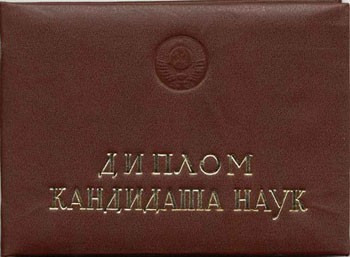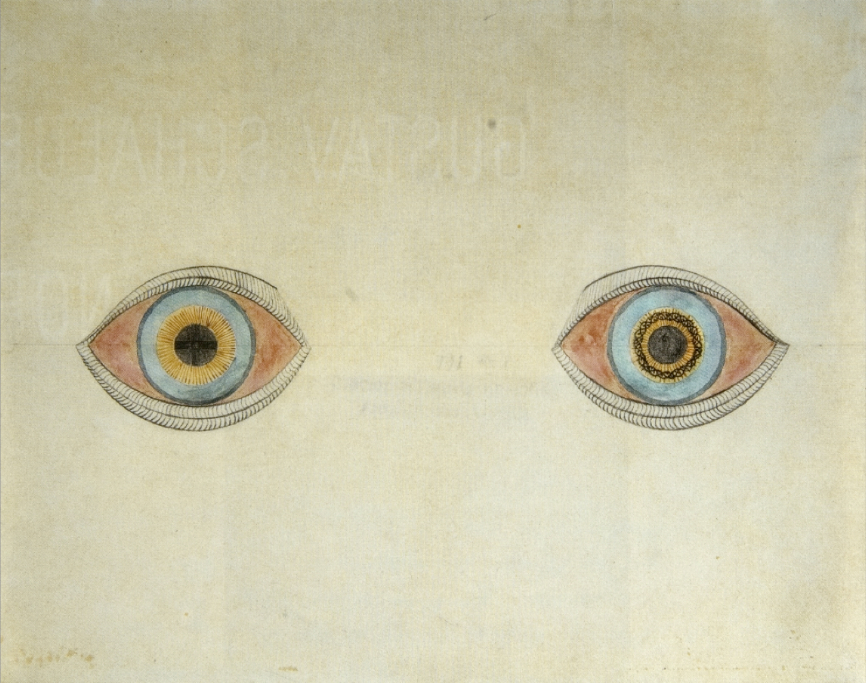|
Anatoly Koryagin
Anatoly Ivanovich Koryagin (russian: Анато́лий Ива́нович Коря́гин, born 15 September 1938, Kansk, Krasnoyarsk Krai) is a psychiatrist and Soviet dissident. He holds a Candidate of Science degree (equivalent to PhD in the West). Along with others, he exposed political abuse of psychiatry in the Soviet Union. He pointed out Russia constructed psychiatric prisons to punish dissidents. Early career Koryagin was born on 15 September 1938 in Kansk (Krasnoyarsk Krai, Russia). After graduating from the Krasnoyarsk Medical Institute in 1963, Koryagin worked for 4 years as a psychiatrist in Abakan. In 1972 he successfully defended his doctoral thesis on apathetic aspects of schizophrenia, and in the same year he became deputy head doctor of the regional psychiatric hospital in Kyzyl. In 1978 he became a consultant at the Kharkiv regional psychiatric clinic. Struggle against political abuse of psychiatry and trial Koryagin served as chief psychiatrist to th ... [...More Info...] [...Related Items...] OR: [Wikipedia] [Google] [Baidu] |
Andrei Dmitrievich Sakharov
Andrei Dmitrievich Sakharov ( rus, Андрей Дмитриевич Сахаров, p=ɐnˈdrʲej ˈdmʲitrʲɪjevʲɪtɕ ˈsaxərəf; 21 May 192114 December 1989) was a Soviet nuclear physicist, dissident, nobel laureate and activist for nuclear disarmament, peace, and human rights. He became renowned as the designer of the Soviet Union's RDS-37, a codename for Soviet development of thermonuclear weapons. Sakharov later became an advocate of civil liberties and civil reforms in the Soviet Union, for which he faced state persecution; these efforts earned him the Nobel Peace Prize in 1975. The Sakharov Prize, which is awarded annually by the European Parliament for people and organizations dedicated to human rights and freedoms, is named in his honor. Biography Early life Sakharov was born in Moscow on May 21, 1921. His father was Dmitri Ivanovich Sakharov, a physics professor and an amateur pianist. His father taught at the Second Moscow State University. Andrei's gran ... [...More Info...] [...Related Items...] OR: [Wikipedia] [Google] [Baidu] |
Candidate Of Science
Candidate of Sciences (russian: кандидат наук, translit=kandidat nauk) is the first of two doctoral level scientific degrees in Russia and the Commonwealth of Independent States. It is formally classified as UNESCO's ISCED level 8, "doctoral or equivalent". It may be recognized as Doctor of Philosophy, usually in natural sciences, by scientific institutions in other countries. Former Soviet countries also have a more advanced degree, Doctor of Sciences. Overview The degree was first introduced in the USSR on 13 January 1934 by a decision of the Council of People's Commissars of the USSR, all previous degrees, ranks and titles having been abolished immediately after the October Revolution in 1917. Academic distinctions and ranks were viewed as survivals of capitalist inequality and hence were to be permanently eliminated. The original decree also recognized some degrees earned prior to 1917 in Tsarist Russia and elsewhere. To attain the Candidate of Scienc ... [...More Info...] [...Related Items...] OR: [Wikipedia] [Google] [Baidu] |
Anti-Soviet
Anti-Sovietism, anti-Soviet sentiment, called by Soviet authorities ''antisovetchina'' (russian: антисоветчина), refers to persons and activities actually or allegedly aimed against the Soviet Union or government power within the Soviet Union. Three different flavors of the usage of the term may be distinguished: * Anti-Sovietism in international politics, such as the Western opposition to the Soviet Union during the Cold War as part of broader anti-communism. * Anti-Soviet opponents of the Bolsheviks shortly after the Russian Revolution and during the Russian Civil War. * As applied to Soviet citizens (allegedly) involved in anti-government activities. History In the Soviet Union During the Russian Civil War that followed the October Revolution of 1917, the anti-Soviet side was the White movement. Between the wars, some resistance movement, particularly in the 1920s, was cultivated by Polish intelligence in the form of the Promethean project. After Nazi G ... [...More Info...] [...Related Items...] OR: [Wikipedia] [Google] [Baidu] |
Science News
''Science News (SN)'' is an American bi-weekly magazine devoted to articles about new scientific and technical developments, typically gleaned from recent scientific and technical journals. History ''Science News'' has been published since 1922 by Society for Science & the Public, a non-profit organization founded by E. W. Scripps in 1920. American chemist Edwin Slosson served as the publication's first editor. From 1922 to 1966, it was called ''Science News Letter''. The title was changed to ''Science News'' with the March 12, 1966 issue (vol. 89, no. 11). Tom Siegfried was the editor from 2007 to 2012. In 2012, Siegfried stepped down, and Eva Emerson became the Editor in Chief of the magazine. In 2017, Eva Emerson stepped down to become the editor of a new digital magazine, Annual Reviews. On February 1, 2018 Nancy Shute became the Editor in Chief of the magazine. In April 2008, the magazine changed from a weekly format to the current biweekly format, and the website ... [...More Info...] [...Related Items...] OR: [Wikipedia] [Google] [Baidu] |
Science (journal)
''Science'', also widely referred to as ''Science Magazine'', is the peer-reviewed academic journal of the American Association for the Advancement of Science (AAAS) and one of the world's top academic journals. It was first published in 1880, is currently circulated weekly and has a subscriber base of around 130,000. Because institutional subscriptions and online access serve a larger audience, its estimated readership is over 400,000 people. ''Science'' is based in Washington, D.C., United States, with a second office in Cambridge, UK. Contents The major focus of the journal is publishing important original scientific research and research reviews, but ''Science'' also publishes science-related news, opinions on science policy and other matters of interest to scientists and others who are concerned with the wide implications of science and technology. Unlike most scientific journals, which focus on a specific field, ''Science'' and its rival ''Nature'' cover the full ra ... [...More Info...] [...Related Items...] OR: [Wikipedia] [Google] [Baidu] |
Spectrum (magazine)
''Spectrum'' is the official publication of Adventist Forum and a non-official publication of the Seventh-day Adventist Church, published four times a year. It was established "to encourage Seventh-day Adventist participation in the discussion of contemporary issues from a Christian viewpoint, to look without prejudice at all sides of a subject, to evaluate the merits of diverse views, and to foster intellectual and cultural growth." It presents a theological point of view which tends to be from the liberal progressive Adventist viewpoint. History ''Spectrum'' was founded in 1969. Molleurus Couperus, a physician in Loma Linda, California, was appointed the first editor. The magazine published the transcripts of some discussions from the 1919 Bible Conference in the 1970s. Editor Roy Branson later reflected that "was the single most important issue" of the journal. In 1998, ''Spectrums offices moved from Takoma Park, Maryland, to Roseville, California. The organization also ... [...More Info...] [...Related Items...] OR: [Wikipedia] [Google] [Baidu] |
Schizophrenia
Schizophrenia is a mental disorder characterized by continuous or relapsing episodes of psychosis. Major symptoms include hallucinations (typically hearing voices), delusions, and disorganized thinking. Other symptoms include social withdrawal, decreased emotional expression, and apathy. Symptoms typically develop gradually, begin during young adulthood, and in many cases never become resolved. There is no objective diagnostic test; diagnosis is based on observed behavior, a history that includes the person's reported experiences, and reports of others familiar with the person. To be diagnosed with schizophrenia, symptoms and functional impairment need to be present for six months (DSM-5) or one month ( ICD-11). Many people with schizophrenia have other mental disorders, especially substance use disorders, depressive disorders, anxiety disorders, and obsessive–compulsive disorder. About 0.3% to 0.7% of people are diagnosed with schizophrenia during their lifet ... [...More Info...] [...Related Items...] OR: [Wikipedia] [Google] [Baidu] |
Apathy
Apathy is a lack of feeling, emotion, interest, or concern about something. It is a state of indifference, or the suppression of emotions such as concern, excitement, motivation, or passion. An apathetic individual has an absence of interest in or concern about emotional, social, spiritual, philosophical, virtual, or physical life and the world. Apathy can also be defined as a person's lack of goal orientation. Apathy falls in the less extreme spectrum of diminished motivation, with abulia in the middle and akinetic mutism being more extreme than both apathy and abulia.Marin, R. S., & Wilkosz, P. A. (2005)Disorders of diminished motivation. Journal of Head Trauma Rehabilitation, 20(4), 377-388. The apathetic may lack a sense of purpose, worth, or meaning in their life. People with severe apathy tend to have a lower quality of life and are at a higher risk for mortality and early institutionalization. They may also exhibit insensibility or sluggishness. In positive ps ... [...More Info...] [...Related Items...] OR: [Wikipedia] [Google] [Baidu] |
Abakan
Abakan (russian: Абака́н, p=ɐbɐˈkan; Khakas: , ''Ağban''/, ''Abaxan'') is the capital city of the Republic of Khakassia, Russia, located in the central part of Minusinsk Depression, at the confluence of the Yenisei and Abakan Rivers. As of the 2010 Census, it had a population of 165,214—a slight increase over 165,197 recorded during the 2002 Census and a further increase from 154,092 recorded during the 1989 Census. History Abakansky '' ostrog'' (), also known as Abakansk (), was built at the mouth of the Abakan River in 1675. In the 1780s, the '' selo'' of Ust-Abakanskoye () was established in this area. It was granted town status and given its current name on 30 April 1931.Resolution of April 30, 1931 Chinese exiles In 1940, Russian construction workers found ancient ruins during the construction of a highway between Abakan and Askiz. When the site was excavated by Soviet archaeologists in 1941–1945, they realized that they had discov ... [...More Info...] [...Related Items...] OR: [Wikipedia] [Google] [Baidu] |
Krasnoyarsk
Krasnoyarsk ( ; rus, Красноя́рск, a=Ru-Красноярск2.ogg, p=krəsnɐˈjarsk) (in semantic translation - Red Ravine City) is the largest city and administrative center of Krasnoyarsk Krai, Russia. It is situated along the Yenisey River, and is the second-largest city in Siberia after Novosibirsk, with a population of over 1.1 million. Krasnoyarsk is an important junction of the renowned Trans-Siberian Railway, and is one of the largest producers of aluminium in the country. The city is known for its natural landscape; author Anton Chekhov judged Krasnoyarsk to be the most beautiful city in Siberia. The Stolby Nature Sanctuary is located 10 km south of the city. Krasnoyarsk is a major educational centre in Siberia, and hosts the Siberian Federal University. In 2019, Krasnoyarsk was the host city of the 2019 Winter Universiade, the third hosted in Russia. Geography The total area of the city, including suburbs and the river, is .Poexaly.ru. Krasnoya ... [...More Info...] [...Related Items...] OR: [Wikipedia] [Google] [Baidu] |
Russia
Russia (, , ), or the Russian Federation, is a transcontinental country spanning Eastern Europe and Northern Asia. It is the largest country in the world, with its internationally recognised territory covering , and encompassing one-eighth of Earth's inhabitable landmass. Russia extends across eleven time zones and shares land boundaries with fourteen countries, more than any other country but China. It is the world's ninth-most populous country and Europe's most populous country, with a population of 146 million people. The country's capital and largest city is Moscow, the largest city entirely within Europe. Saint Petersburg is Russia's cultural centre and second-largest city. Other major urban areas include Novosibirsk, Yekaterinburg, Nizhny Novgorod, and Kazan. The East Slavs emerged as a recognisable group in Europe between the 3rd and 8th centuries CE. Kievan Rus' arose as a state in the 9th century, and in 988, it adopted Orthodox Christianity from the ... [...More Info...] [...Related Items...] OR: [Wikipedia] [Google] [Baidu] |






